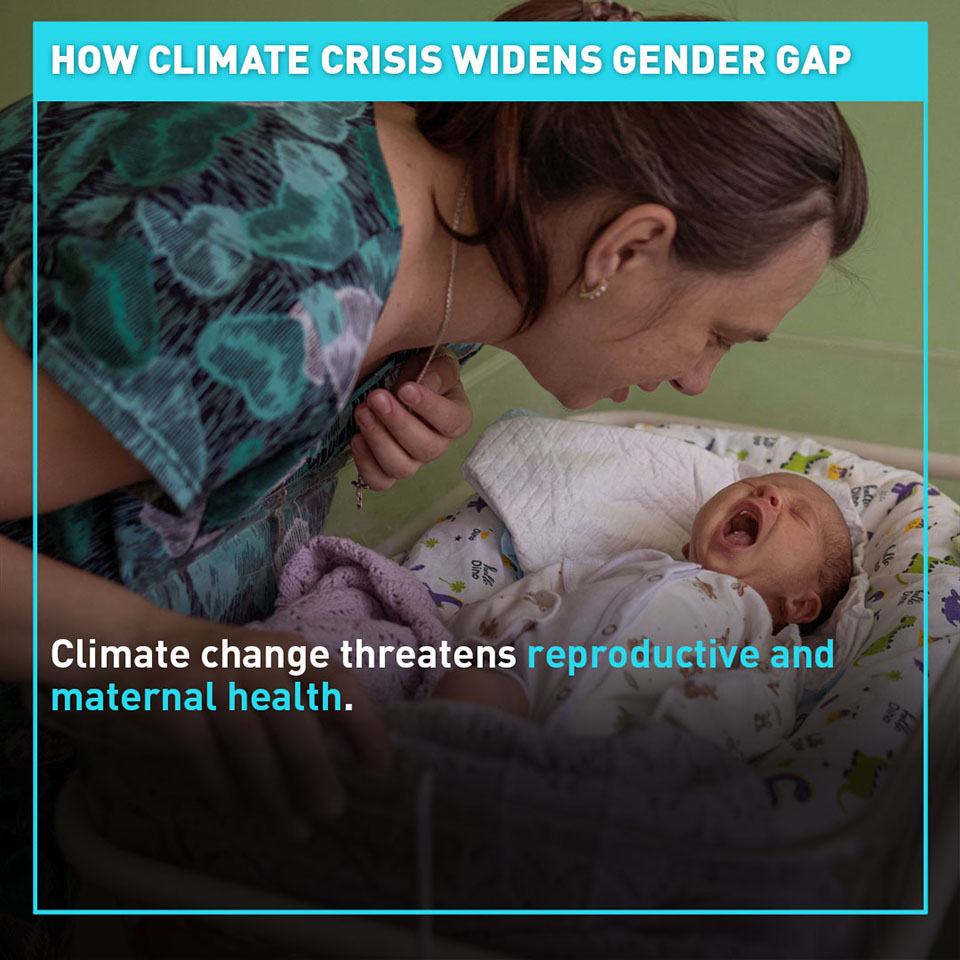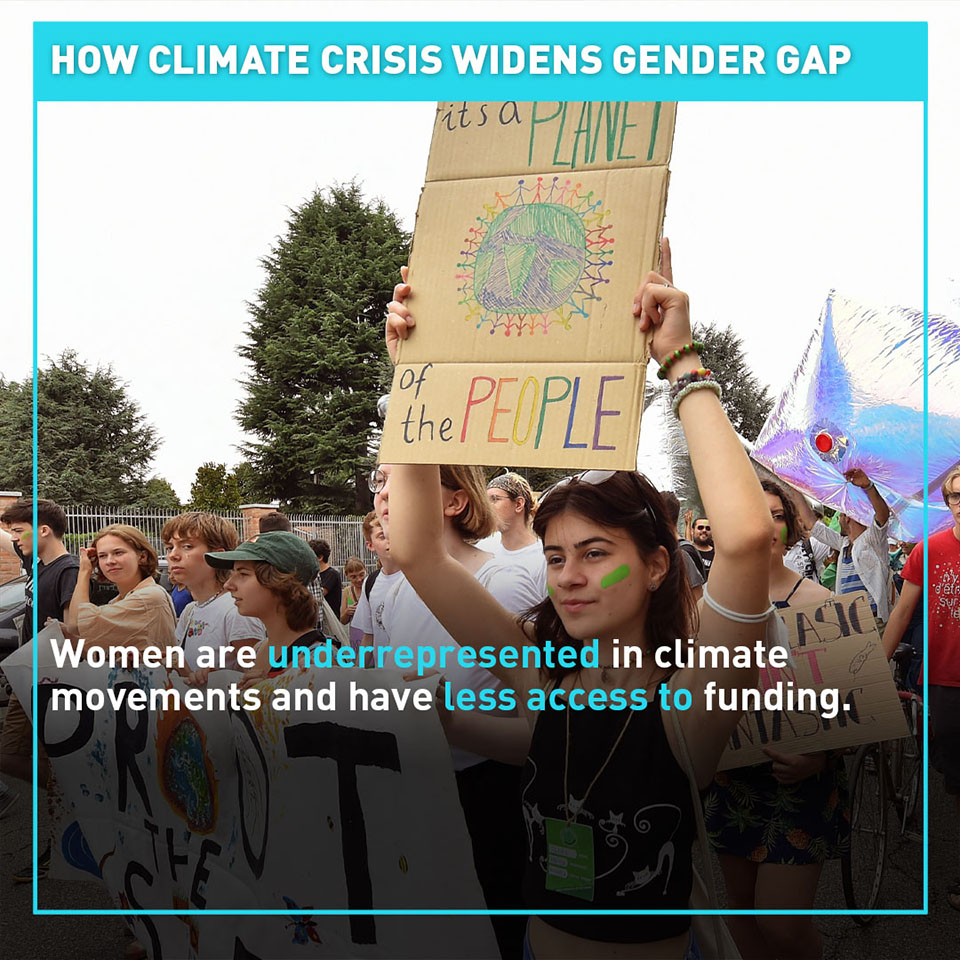When it comes to the global economy, the COVID-19 pandemic has impacted girls and women disproportionately and reversed progress on achieving gender equality. More women were out of work and pushed to perform childcare.
According to the latest estimates from the World Economic Forum's Global Gender Gap Report, it will now take 132 years to close the gender gap, compared to the pre-pandemic level of fewer than 100 years.
As many parts of the world experience rapid and intensifying effects of climate change, UN Women warns that global warming will further amplify the gender gap, because climate crisis is not "gender neutral."
Women bear a disproportionate share of the burden of securing food, water and fuel in many regions of the world. Agriculture is the most important employment sector for women, especially in low and lower-middle-income countries. Women will face challenges in securing income and resources for their families in drought-affected or flood-affected areas.
Climate change could displace up to 216 million people by 2050, the World Bank warns. Girls and women are more likely to be left behind in the migration decision-making due to caregiving obligations, lack of financial assets and limited rights to land and property.
Even when some of them successfully break the barriers and manage to leave disaster-prone areas, they may face higher risks of unemployment, child marriage, human trafficking, and gender-based violence.

Higher temperatures, more frequent and intensifying rainfall and increases in humidity create favorable conditions for infectious diseases caused by parasites, viruses and bacteria, such as malaria, dengue fever, and Zika virus. They can cause miscarriages, premature birth and anemia among pregnant women.
In a February report by the Intergovernmental Panel on Climate Change, researchers found that girls and women face more food insecurity and malnutrition than boys and men and are more likely to die in extreme weather events. In addition, climate crisis could have a great impact on their mental health.

According to the United Nations, women around the world have demonstrated resilience and leadership in protecting their communities, land, livelihoods and natural resources for generations. They are environmental defenders. However, men still fill 67 percent of climate-related decision-making roles and women's representation in national and global climate negotiating bodies remains below 30 percent.
The Generation Equality Action Coalition on Feminist Action for Climate Justice also found that only 3 percent of philanthropic environmental funding goes to support girls' and women's environmental activism. Additionally, female-led organizations, which are frequently small, face challenges in obtaining funding from climate finance providers, which mostly invest in large-scale projects, starting at $10 million.
For more, check out our exclusive content on CGTN Now and subscribe to our weekly newsletter, The China Report.

